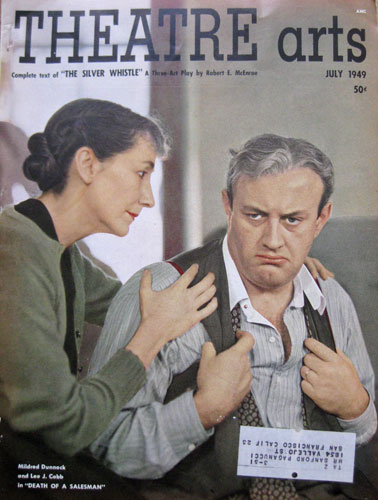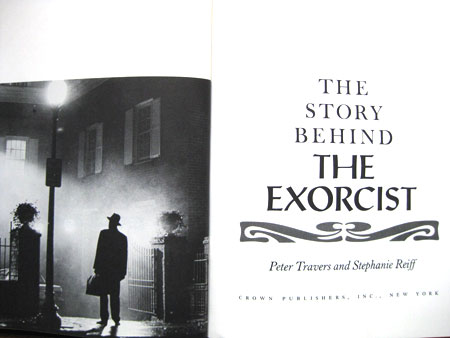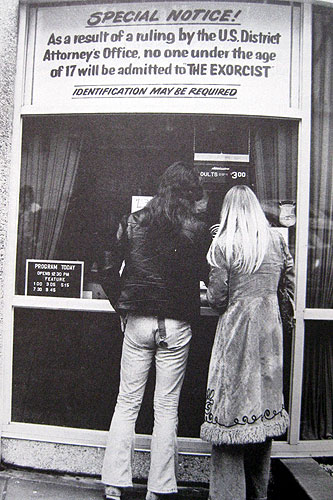Walking up the stairs I noticed the arresting photo of Lee J. Cobb. Upon inspection, the photo was taken by Richard Avedon. I really have to get to the show at the MOMA before it closes - note to self!

Lee J. Cobb made me think of The Exorcist. This film has obsessed me for years; the idea of someone, a priest, who agonizes over the loss of his faith only to have it restored when confronted by what he comes to believe to be real evil.
While going through the film books, I was surprised to find a book I didn't know existed, The Story Behind the Exorcist by Peter Travers and Stephanie Reiff (1974).

I've read William Peter Blatty on the Exorcist: From Novel to Film (1972), which gives a lot of insight into the book and film development and background from the writer's perspective. The Story Behind... gives a lot more general background and tidbits like the four month search for a child actor up to the task of playing the possessed girl and the controversy that almost lead to the dreaded 'X' rating.
In August of 1973, the U.S. Supreme Court ruled that obscene content was not protected by the First Amendment of the Constitution and went on to define obscenity. The Wikipedia article "Miller v. California" states the three points in the definition:
* the average person, applying contemporary community standards (not national standards, as some prior tests required), must find that the work, taken as a whole, appeals to the prurient interest
* the work depicts or describes, in a patently offensive way, sexual conduct or excretory functions specifically defined by applicable state law
* and the work, taken as a whole, lacks serious literary, artistic, political, or scientific value
This ruling gave states more power to bring cases against what the community felt was "obscene." After the film's release in Dec. of 1973, a case was brought against film distributors in Boston siting the new obscenity ruling; the case sought to ban The Exorcist in Boston. Although the judge's ruling stated that "it does not meet the guidelines of obscenity as laid down by the United States Supreme Court" and the case was dismissed, the field was open for additional lawsuits. Soon after, the Division of Film and Broadcasting for the U.S. Catholic Conference rated the film A-IV, morally objectionable. They condemned the MPAA for giving the film a 'R' rating.
Finally, in Washington DC, community action achieved a success. On New Year's Day of 1974, the U.S. District Attorney's Office ruled to ban the film's ticket sales to anyone under 17 and warned theaters that arrests would be made for any violations of this ban.

Luckily for the film, produced by the author William Blatty, the 'R' rating stuck and The Exorcist became one of most talked-about films and biggest money maker in film history.
Okay now, enough distraction!!! I'm off to the library to do research for my festival project. I'm so easily sidetracked! And I want to sew too! My blouse project is languishing!!
No comments:
Post a Comment